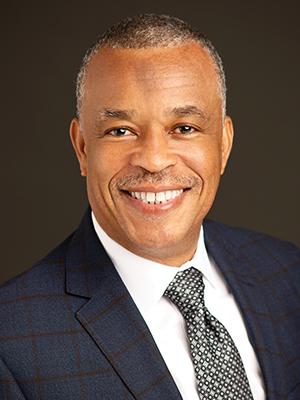 James M. Richardson
James M. RichardsonJames M. Richardson CFP®, ChFC®, APMA® is a Private Wealth Advisor and CERTIFIED FINANCIAL PLANNER practitioner with Richardson Private Wealth Advisors, a private wealth advisory practice of Ameriprise Financial Services, Inc. in Raleigh, N.C. He specializes in fee-based financial planning and asset management strategies and has been in practice for 29 years.
We spend a lot of time daydreaming about and planning how to achieve our goals. Charting a new career, creating a bucket list, helping a loved one reach success, and other goals all have financial implications that deserve consideration. This is where a financial plan comes in. The goal of a plan is to lay out what success looks like to you, and how you can position your finances to help you get there. A well-crafted financial plan is:
Personalized. Your plan should contain the details of your current financial situation and outline your life goals, both near-term and extending into retirement. Using actual data can ground your plan in reality and help you see what you need to do to stay on track. Generally, there are four areas you should address:
- Covering your essentials. Essentials are the monthly expenses that keep your life running, such as mortgage payments, utility bills, and insurance premiums. Your financial plan should provide advice and solutions to cover your day-to-day needs while also providing for your necessary living expenses in retirement.
- Maintaining your lifestyle. Lifestyle refers to the things you want to do and how you want to live, today and in the future. If you dream of purchasing a second home or retiring in a warmer climate, your financial plan should quantify the costs of these goals and outline action steps to help you achieve them.
- Preparing for the unexpected. Life is not without its surprises. Your financial roadmap should include contingency plans to help you stay on track financially when something unexpected happens to you or a loved one. This may include establishing an emergency fund and insurance coverage to help offset damaged property or lost wages.
- Leaving a legacy. Your legacy is the impact you make on people, charities, and causes that are important to you—now, in retirement, and after your death. Key components are naming beneficiaries on key accounts, building charitable giving into your financial life, and estate planning to determine how you want your assets to be distributed to your heirs.
Comprehensive. All the bases of your financial life should be covered within your plan, from insurance to investments, cash flow, retirement, estate planning, and everything in between. Include your financial obligations and goals, no matter how big or small they are. Seeing your full financial picture in one place makes it easier to adjust course or test scenarios as your priorities change down the road.
Dynamic. A financial plan is not a static document you create once and never revisit. Rather, it puts a stake in the ground that can inform future decisions. Your financial plan should be updated as your life goals and circumstances change.
Trackable. Without a plan, it is difficult to determine if you will be prepared to meet your anticipated retirement date, whether you have sufficient sums saved to put a child through college, or if you’ve taken proper steps to protect your family. In this way, your financial plan can help you stay accountable to your financial future.
Useful, no matter your net worth. Turning your goals into reality without a financial plan is a lot like driving in an unfamiliar place without a GPS. Regardless of how much you make or have saved, a financial plan can help you be strategic with your dollars.
If you have not yet had a comprehensive financial plan prepared for you and your family, consider working with an advisor who can help you get started. Together, you can identify doable steps to help you work toward your financial dreams.

